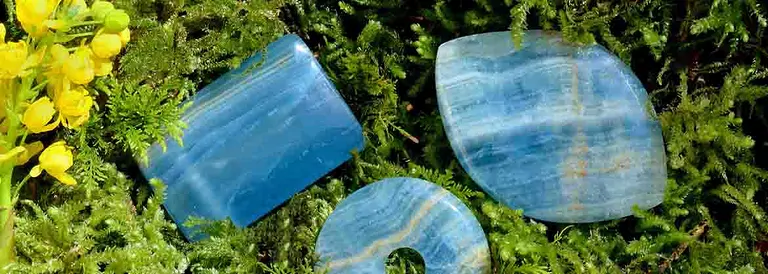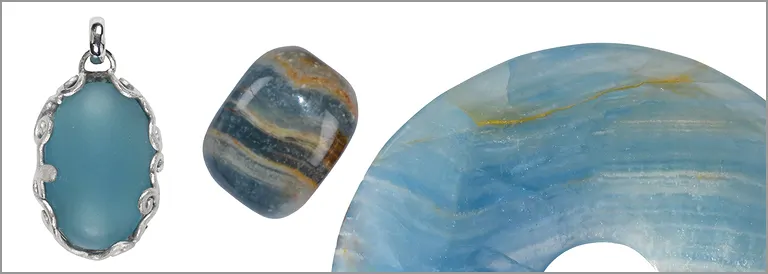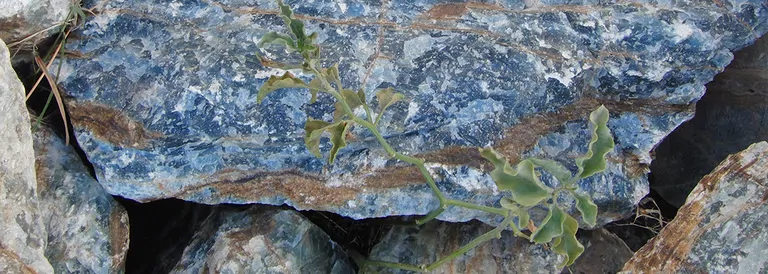
Blue Aragonite - Meaning and Effect
Blue aragonite supports to remain flexible and tolerant in all the hustle and bustle, but still concentrated to work on the implementation of projects and plans. Thus, all developments can proceed harmoniously and we can maintain our inner balance despite the busyness. Strengthened, we can use this dynamic time of year to make our lives pleasant and enjoyable. Due to the copper admixtures, the blue aragonite makes flexible in thought and action, but without losing the fundamentally stabilizing effect of aragonite.
Because of its stone healing effect, the blue aragonite is also popular for gemstone massages and gemstone wellness. However, the massage stones used must not be cleaned with cleaning agents after treatment, as the blue aragonite is sensitive to acids.
Mineralogical profile of blue aragonite
Chemical formula: CaCO3
Mineral class: Carbonate
Origin: on fissures and druses in volcanic rocks, as heel of warm springs and hydrothermally in veins
Color: Light blue due to Copper, partially colorless-transparent areas and brown zones due to Iron
Gloss: Silky luster
Appearance: Rock-forming
Crystal system: rhombic
Mohs hardness: 3.5 to 4
Splitability: poor splitting, conchoidal fracture,
Source, main supplying countries: Peru, Spain, Mexico, Austria, China
Use: Blue aragonite is used to decorative items as well as gemstone.
The astrology knows aragonite as a stone for Aries and Sagittarius-born, to whom he gives the feeling for the right measure. For Aquarius-born, it is used to promote stability.

Aragonite - the colour
Aragonite is actually a transparent, inconspicuous mineral; it is only through inclusions of Copper and Iron that the stone gets its vivid blue color and brown drawings. Therefore, the blue aragonite from Argentina is occasionally falsely called "oceanite". There are also suppliers who offer blue colored aragonite - our assortment is mostly cut from our own raw material, which we ourselves have bought locally in the province of Salta (Argentina) and not artificially colored. The bright blue is a very popular color - Mercedes also offers the paint "Aragonite blue"! .
The name Aragonite
About the correct name for aragonite it came between some leading mineralogists in the 18th century to the dispute. First, in 1788, the German mineralogist Abraham Gottlob Werner (1749 - 1817) named the mineral after its occurrence presumed in Aragon/Spain and the apparently hexagonal crystal form aös initially "Arragonischer Apatit". But after the German chemist Martin Heinrich Klaproth (1743 - 1817) proved in the same year that the mineral does not consist of calcium phosphate (apatite) but of calcium carbonate, it was renamed by Werner in 1790 in "Arragonischer Kalkspat" and later Arragonit. 1797 the mineral got its name by Abbé Franz Joseph Anton Estner (1739 - 1803) - "Arragonit"; at first still with a double letter R.
But also this name was not undisputed among the mineralogists of the time and the French mineralogist René-Just Haüy (1743 - 1822) criticized the name choice "Arragonit" very strongly, since it was already known that there was the mineral not only in Aragonia/Spain, but beyond that also in France and Germany. Nevertheless, the name Aragonite has been kept until today. In retail as well as wholesale blue aragonite is also called Oceanite.
Blue aragonite for retailers, e.g. pendants, rings, donuts, drilled stone parts and tumbled stones
